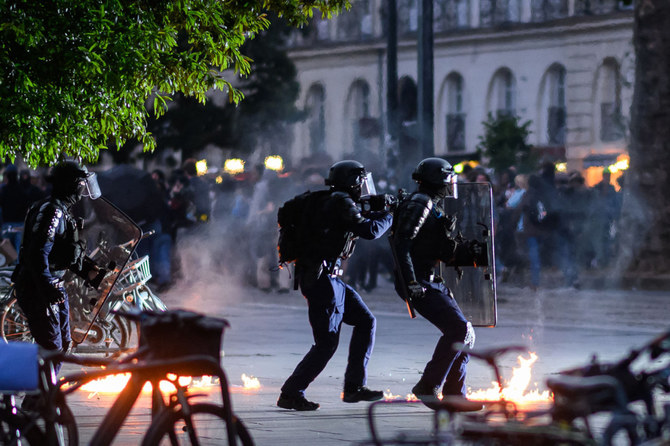Here’s what may come next after France’s election on Sunday looked set to produce a hung parliament, with a leftist alliance in the lead but without a absolute majority.
What happened in Sunday’s second round vote?
The left-wing New Popular Front alliance was on track to win the biggest number of seats, according to pollsters’ projected results, but it will fall short of the 289 needed to secure an outright majority in the lower house.
The outcome delivers a stinging defeat to the far-right National Rally (RN) party, which had been projected to win the vote but suffered after the NFP and President Emmanuel Macron’s Together bloc worked together between the first and second rounds of voting to create an anti-RN vote.
Projections showed the RN finishing third, behind Together.
It means none of the three blocs can form a majority government and would need support from others to pass legislation.
Will a left-leaning coalition form?
This is far from certain.
France is not accustomed to the kind of post-election coalition-building that is common in northern European parliamentary democracies like Germany or the Netherlands.
Its Fifth Republic was designed in 1958 by war hero Charles de Gaulle to give large, stable parliamentary majorities to presidents and that has created a confrontational political culture with no tradition of consensus and compromises.
Moderate leftwing politician Raphael Glucksmann, a lawmaker in the European Parliament, said the political class would have to “act like grown-ups.”
Jean-Luc Melenchon, leader of the hard-left France Unbowed (LFI), ruled out a broad coalition of parties of different stripes. He said Macron had a duty to call on the leftist alliance to rule.
In the centrist camp, Macron’s party head, Stephane Sejourne, said he was ready to work with mainstream parties but ruled out any deal with Melenchon’s LFI. Former Prime Minister Edouard Philippe also ruled out any deal with the hard-left party.
Macron himself said he will wait for the new assembly to have found some “structure” to decide his next move.
What if no agreement can be found?
That would be uncharted territory for France. The constitution says Macron cannot call new parliamentary elections for another 12 months.
Prime Minister Gabriel Attal said he would tender his resignation to Macron on Monday morning, but that he was available to act in a care-taker capacity.
The constitution says Macron decides who to ask to form a government. But whoever he picks faces a confidence vote in the National Assembly, which will convene for 15 days on July 18. This means Macron needs to name someone acceptable to a majority of lawmakers.
Macron will likely be hoping to peel off Socialists and Greens from the leftist alliance, isolating France Unbowed, to form a center-left coalition with his own bloc.
However, there was no sign of an imminent break-up of the New Popular Front at this stage.
Another possibility is a government of technocrats that would manage day-to-day affairs but not oversee structural changes.
It was not clear the left-wing bloc would support this scenario, which would still require the backing of parliament.





























